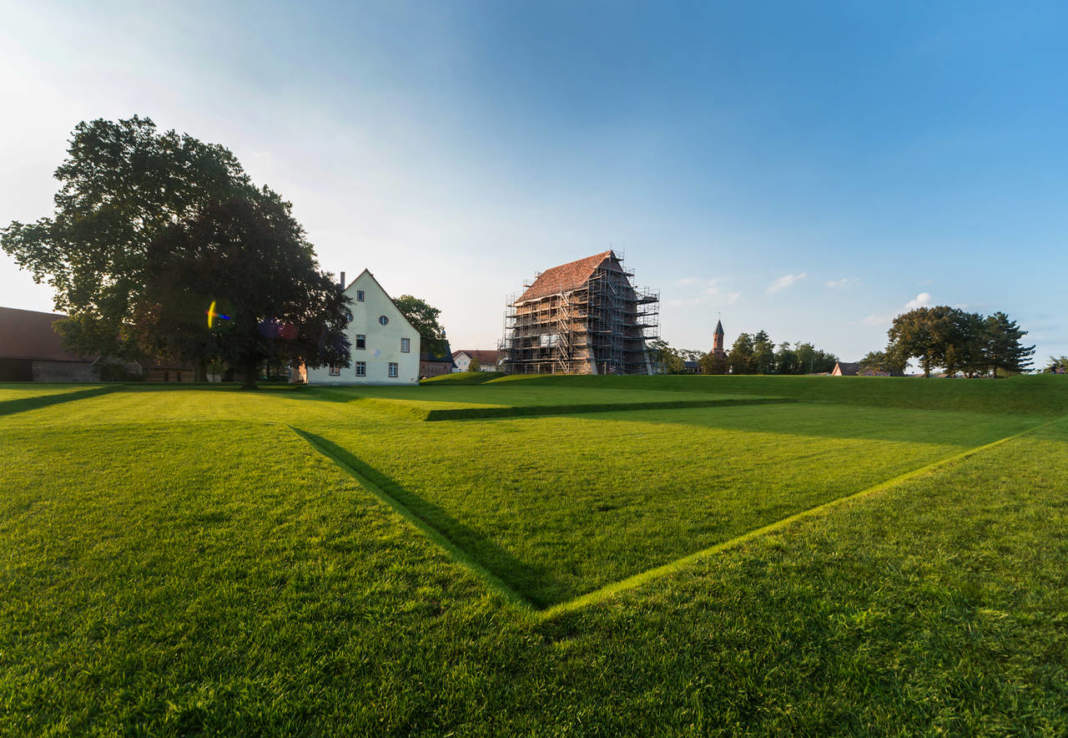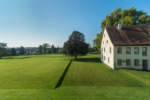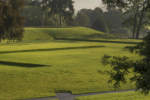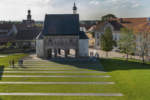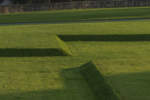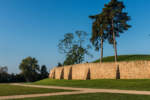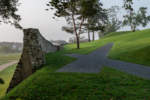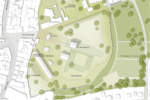architect: TOPOTEK 1 with hg merz Architekten
location: Lorsch (Hesse), Germany
The classic scriptures of antiquity are almost all lost. We know about the biblical paradise or Herodotus’ historiography mainly from transcripts that were created in the medieval scriptoria of monasteries. One of the most important centres of such re-edition of cultural memory was the Benedictine Abbey in Lorsch, Germany near the river Rhine. Dissolved as a monastery in 1557, and acknowledged as a UNESCO World Heritage Site in 1991, the site shares the destiny of the antique scriptures: little is left of its original substance.

The central design idea is to render history visible as landscape space, aiming to make the remnants and former existence of the monastery legible again. At the site of this historic Lorsch abbey most of history had been wiped clean, the historic monastery is in fact missing the monastery. What was left is a void of history, a nothingness strikingly elegant, powerful and compelling. Our aim was to exemplify and emphasis this nihility, to express presence and history through the sites inherent and austere nothingness. Unlike former, often historicising visualizations, the new design is based on the language of the ground. What today can safely be considered the true extent of the waned monastery is retold through topographic gestures. To resurrect historical tangibility, the footprint of the lost compound and the central axis of the monastery were traced and etched into the landscape. The outlines of the church, the walled entrance court and the conclave with its cloister are defined and represented by slightly protruding terrain. A sharply drawn raised slope, some thirty-five centimeters high creates an imprint of lost architectural volume generating absence legible in space. The open lawn terrain and grass-covered traced footprints are materially seamlessly unified. Like the tactile writing system of braille, the landscape undulates with physical symbols craving to be read. Across the open field the sharp angles of the former architectural footprints jut out into the agape terrain, creating provocative architectonic forms across the lush green landscape. Through the juxtaposition of the scenic landscape and the raised geometric forms a quiet yet dramatic poeticism is born. These graphical imprints read as the ghosts of history stamped on the historical open landscape. While at first perhaps perceived as incidental insignia, as the viewer steps away full forms are born through the raised outlines. Shapes become recognizable, building imprints legible and architectural volumes imagined. When engaged in projects of restoration designers are confronted with the task of remaking and reinventing, it is essentially an act of reconstructing history. Here the architects chose not to resuscitate the lost reality of the Abbey but instead to link the past with the present. The open lawn provides a textural backdrop to the site and allows for overall free access: the visitor here experiences the UNESCO site as an uninterrupted park in which one can interpret history. Read like ancient markings of a lost civilization, the legacy of Lorsch Abbey becomes a topographic transcript. The physical abbey, lost for centuries, becomes palabable and the historical significance of the site given quite dignity. In creating the historical reliefs there was no excavation, as an essential facet of the plan, the strata of history remained intact.
Client: Administration of State Palaces and Gardens Hesse / City of Lorsch
Project team: TOPOTEK 1 with hg merz Architekten
Competition: 1st Prize, 2010
Planning and realization: 2010–2014
Size: 6 ha


